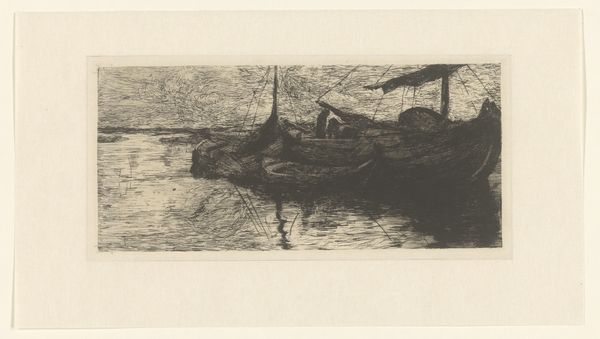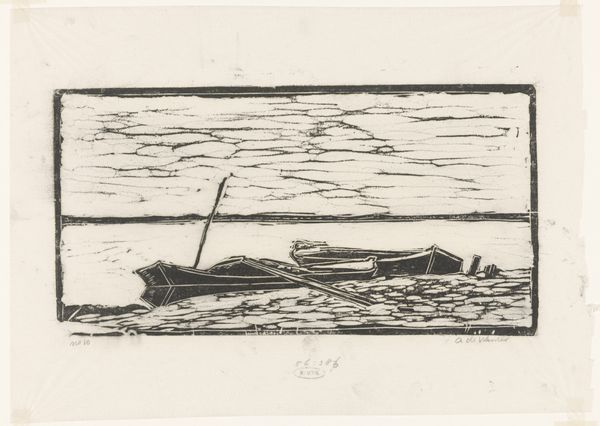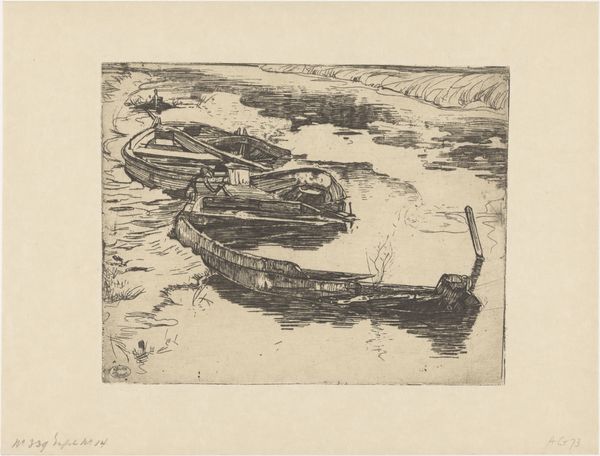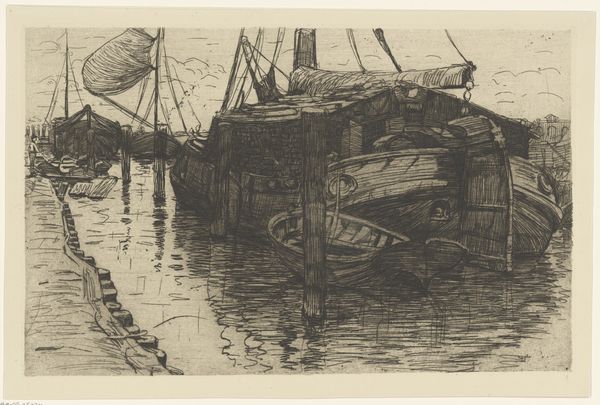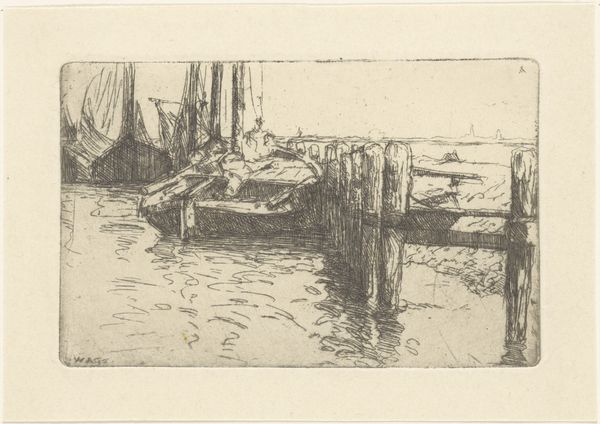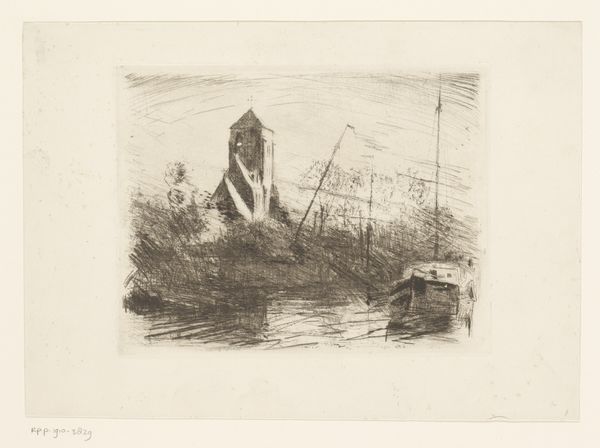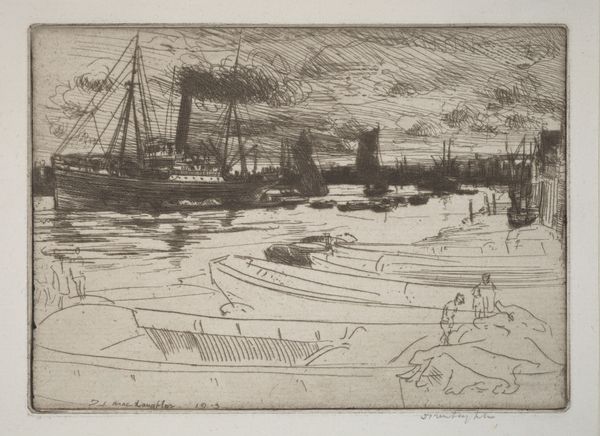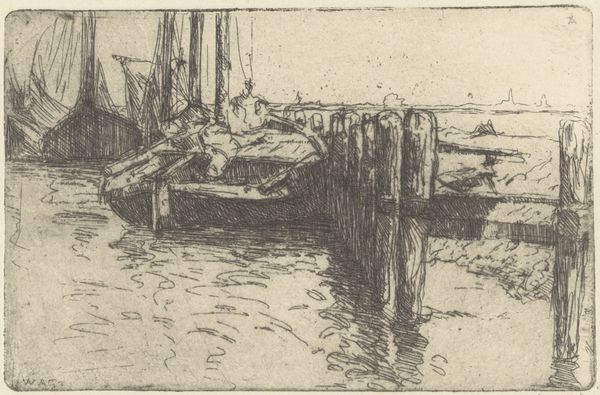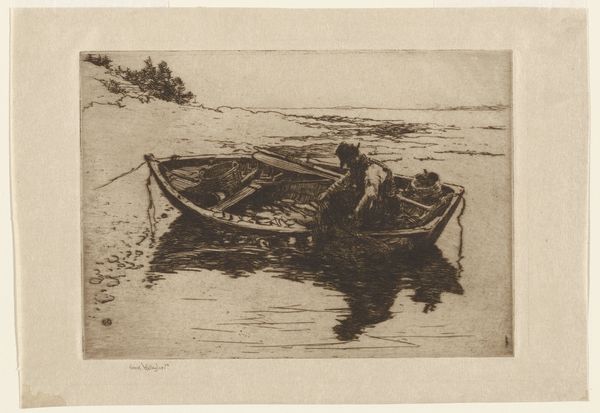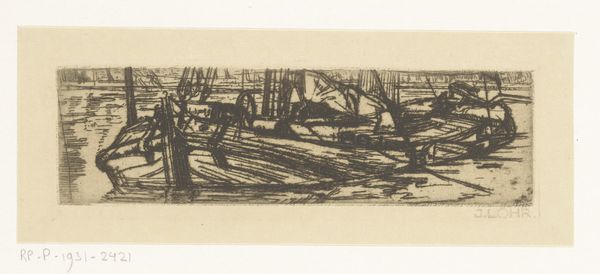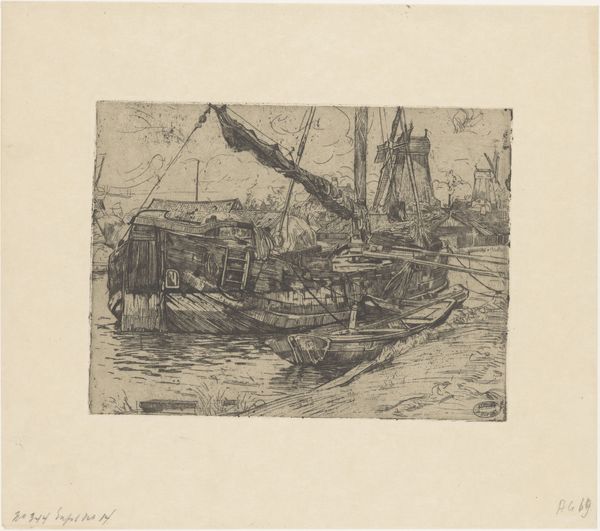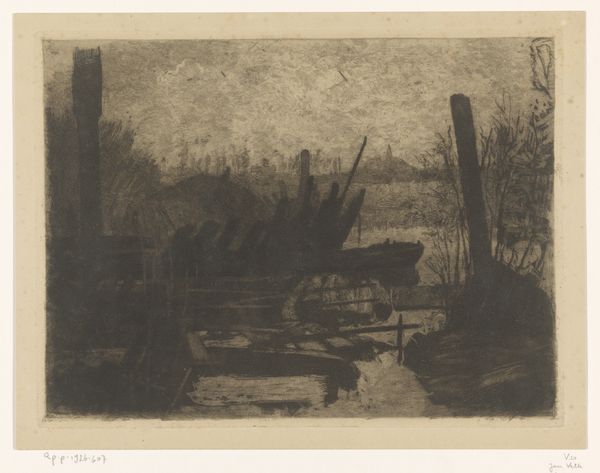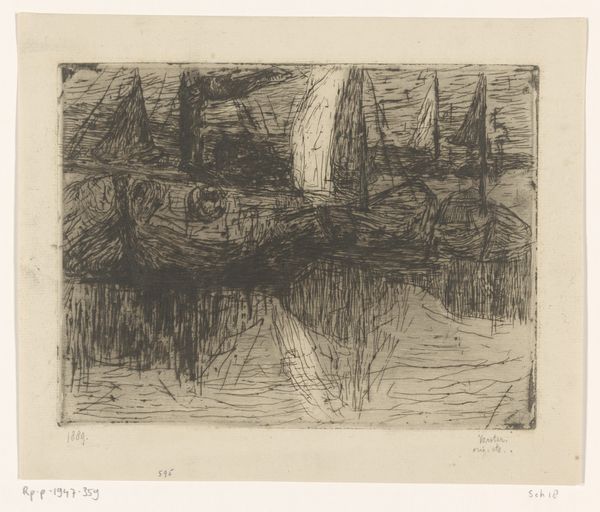
drawing, print, ink, pencil
#
drawing
#
toned paper
#
light pencil work
# print
#
pen sketch
#
pencil sketch
#
landscape
#
personal sketchbook
#
ink
#
ink drawing experimentation
#
pen-ink sketch
#
pencil
#
sketchbook drawing
#
pencil work
#
sketchbook art
#
realism
Dimensions: height 114 mm, width 175 mm
Copyright: Rijks Museum: Open Domain
Curator: Looking at “Aangemeerde boten in haven,” or "Moored boats in the harbor," we have here an intriguing drawing by Maurits van der Valk, created sometime between 1867 and 1914. The Rijksmuseum holds this work. It combines pencil and ink on toned paper. Editor: My first impression is of a bustling, yet strangely still harbor scene. The lines are economical, almost frantic in places, giving a sense of barely contained energy. There’s a foregrounded rowboat that looks like it’s run aground. Curator: Indeed. Let’s consider the material process. The combination of pencil, ink, and toned paper speaks to an economy of means. Toned paper itself presents a pre-existing condition influencing the overall composition. Van der Valk worked within certain industrial limits. The choice implies practicality—perhaps for quick studies done en plein air. Editor: I agree. The lines, etched with ink, and the subtle tonal variations achieved with pencil establish a dynamic interplay of dark and light. The artist uses the blank paper as a compositional element, activating the pictorial space through carefully placed lines and massing of shapes, such as in the clustered boats and storage buildings. Curator: Precisely. It evokes questions around artistic labor. Who used these boats, what role did harbors play in the broader socio-economic structure of the Netherlands at the time? The repetitive nature of boats suggest both transport and toil. How does Van der Valk fit into and observe this structure? Editor: The way the artist represents water—a series of vertical, almost calligraphic strokes—adds to the overall sense of controlled spontaneity. Consider how each element in the scene has unique visual language. That disjuncture helps create the effect of dynamic activity held static. Curator: And by depicting such scenes, he documents, interprets, and participates in the contemporary debates and practices surrounding Dutch life, as seen with growing industrialization impacting everyday experiences in cities and in natural harbors. Editor: I see the tension between the ephemeral and enduring, capturing both fleeting visual experience and inherent underlying structural components of representation. I appreciate how it rewards extended looking. Curator: Agreed. A work made of modest material with powerful implications. Editor: A subtle masterclass of tonal sketching!
Comments
No comments
Be the first to comment and join the conversation on the ultimate creative platform.

